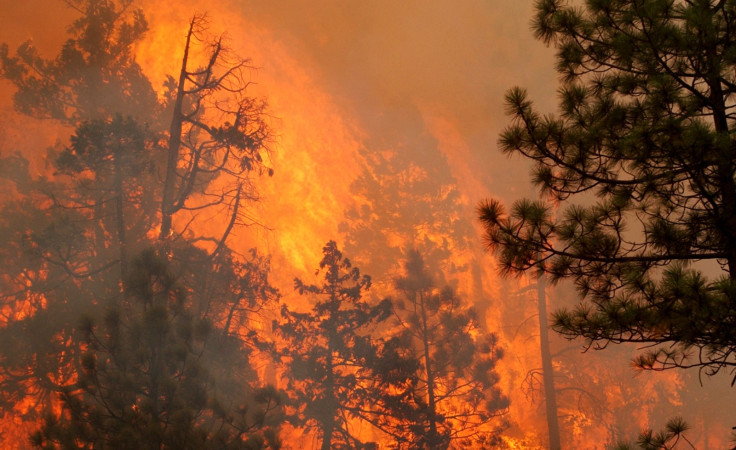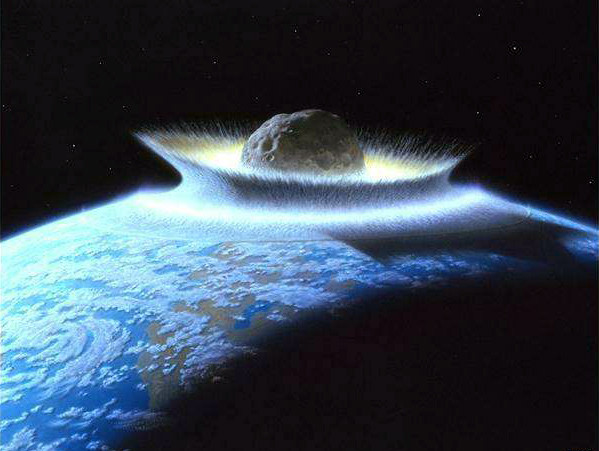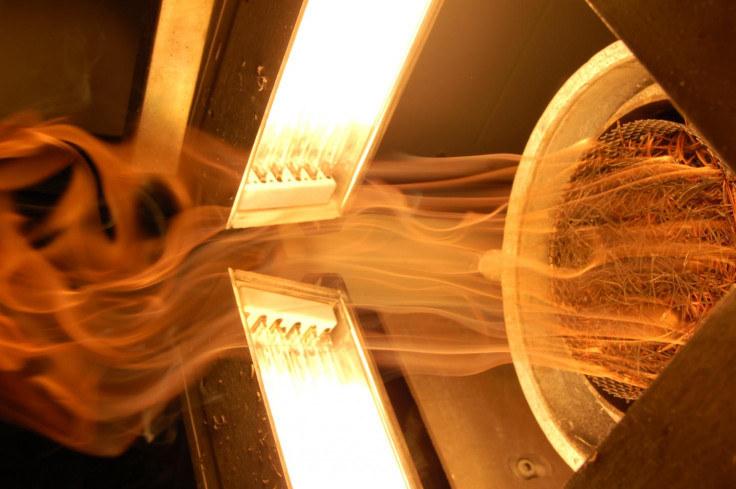Dinosaur-killing asteroid did not cause global firestorms: Mass extinction theory debunked

The asteroid believed to have wiped dinosaurs from the face of the Earth did not cause global firestorms, scientists have discovered, challenging a long-held and popular belief about the End-Cretaceous mass extinction.
Published in the Journal of the Geological Society, scientists from Exeter University recreated the impact in a laboratory experiment to find out what the huge pulse of heat it emitted would have done to the planet.
Their findings have challenged our understanding of the fossil record – turning much of what we believe about the event on its head.
Dr Claire Belcher, from the Earth System Science group in Geography at the University of Exeter, told IBTimes UK the argument over the theory of global firestorms has been raging for more than a decade.
The asteroid, around 10km in diameter, struck what is now the Yucatán peninsula in Mexico 65 million years ago. At the time, the area was submerged in a shallow ocean. First identified in 1980, the impact led to the mass extinction of about 71-81% of all species on the planet at the time.

Years later, scientists began to look at the chemistry of rock and found soot particles, leading to the idea the energy from the impact caused widespread fires.
However, the latest simulation shows this was not the case. When the asteroid hit, the was a huge explosion obliterating an area about 1,000km around the impact site. Hot incandescent material – including rock and asteroid fragments – were set rushing up through the atmosphere into space, before falling back down as "melt blobs" of rock.
Belcher said: "They superheat the atmosphere and it's this that heats the Earth and raised this huge thermal pulse to the Earth as a whole. That's deadly part for the rest of the world."
The scientists used four extremely powerful halogen lamps to recreate the blast then altered it to mimic how it would have affected different parts of the globe.
Surprisingly, the researchers found the heat blast near the impact site could not have ignited wildfires as it lasted just a few seconds. However, in what is now New Zealand, the heat from the blast – although lower – lasted for seven minutes, providing plenty of time to ignite matter on the land.
What happened to species living in what is now North America (which was two landmasses separated by an ocean), is unknown. However, Belcher said this where the research and understanding of the fossil record gets interesting.

She said: "Generally thinking, we assumed North America must have been worse. A lot of time has been spent looking at the fossil record of North America and less from more distant sites. There are records from New Zealand and we do see extinctions in plants at least, so we know things were affected. In a way, our understanding of the fossil record now doesn't really match.
"People might start to think about what the records they've been finding from fossils mean now. It doesn't mean the records are wrong, but maybe how they've been interpreted, we need to think about that a bit more."
The scientists used the worst-case scenario for their experiments to see just how bad the pulse of heat could have been. The vegetation in their scenario was dry and flammable – meaning there might not have been wildfires at all if the flora had been very moist, with trees widely spaced.
Belcher said: "What we are able to say is that maybe fires weren't ignited in a lot of places. They would be more localised – some fires, but it rules out the global fire hypothesis.
"In terms of extinctions, it's very hard to implicate – animals can hide and plants can grow back. What caused the plants to go extinct has to be something else."
With animals, Belcher said smaller creatures that could hide, hibernate or find shelter were able to survive. But larger animals, such as the dinosaurs, would not have had much of a chance. The initial heat blast from the impact could well have caused extinctions but it does not explain the survival of the plants.
Instead, the researchers believe the asteroid was a "smoking gun".

Belcher said: "Some people have suggested that after this initial heat, we have what was called an impact winter. The dust in the atmosphere would have blocked out sunlight and shut down photosynthesis, making the world very cold for several years or more, some have said 40 years, which is perhaps much more dangerous than the initial heat pulse.
"If you look at late crustaceous, there's also been this huge volcanic episode in India, which had been going on for a long time and had been getting worse and worse, so that must have been altering the Earth's systems, maybe affecting climate."
There were also huge changes going on in terms of emerging species – flowing plants emerged, for example – so animals were going extinct throughout this period before the asteroid hit.
"You could say the asteroid is the smoking gun, and it probably is. But it created a whole range of effects, and wildfires are probably such a minor part of that. The heat pulse has quite a large potential to have caused extinctions, but it can't explain all extinctions," Belcher said.
"We now need to look at and understand the fossil record almost from the other way round. And if we're looking at the effects of the heat pulse, we need to look further afield."
© Copyright IBTimes 2025. All rights reserved.






















